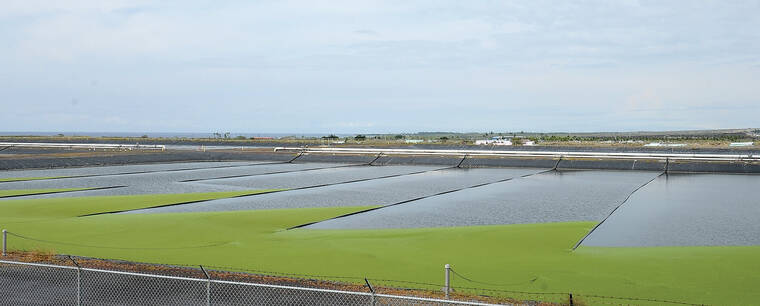A 20-year-old plan to upgrade the Kealakehe wastewater treatment plant to produce and sell R-1, the highest grade of recycled water, risks sliding down the priority scale as the county tries to shore up other projects to avoid federal fines.
The sewer plant, built to handle 5.3 million gallons of wastewater per day, currently averages about 1.8 million gallons per day with 1,711 connections. The $162 million price tag to take the plant to R-1 water includes $35 million for aquifer treatment, $25 million for a subsurface wetland and $20 million for pipeline, among other expenses.
Two West Hawaii members of the Environmental Management Commission pressed the administration Wednesday for an explanation for what they saw as downgrading the importance of the project, which is intended to reduce effluent into Honokohau Harbor and create a revenue source at the same time.
“I’m going to continue to push,” said Commissioner Rick Gaffney. “This was a priority of the previous administration but not the current administration.”
Environmental Management Director Ramzi Mansour disputed that contention.
“That’s not a true statement,” Mansour said. “It is a high priority but not the No. 1 priority.”
The first priority for the county, said Mansour, is the aging Hilo sewer plant, where 86% of the equipment needs to be replaced or repaired at a cost of $150 million to $200 million. The Environmental Protection Agency in 2014 ordered the county to fix the leaking outfall pipe that was leaking treated wastewater close to shore, but many more repairs are required as well to prevent a greater disaster there..
The second priority, Mansour said, are the gang cesspools in Naalehu and Pahala. The EPA fined the county $28,500 in November for missing its deadline in a consent order to replace the cesspools with a sewer system. The county needed more time in order to pursue cheaper options than the $130 million plan approved by a prior administration, Mansour said.
The third priority is a countywide pretreatment process requiring industrial and commercial facilities to clear their discharge to remove harmful pollutants before sending it to the county wastewater treatment plants. It’s an area of concern for the county, which is currently formulating administrative rules so it can assure compliance with state and federal laws.
Then in fourth place, comes the Kealakehe wastewater treatment plant.
“The bottom line, it really comes to funding,” Mansour said. “We need to look at different ways to deliver our project.”
The county had pushed the state Legislature to advance bills allowing it to enter public-private partnerships to help pay for projects such as the Kealakehe R-1 plan. But opposition, especially from labor unions, have torpedoed the bills again this year.
But Mansour said the county is moving forward with a regional park across the street that could use the R-1 water.
Commissioner Dee Fulton said dumping nutrient-rich treated wastewater into a sump a half mile from the harbor may not be as obvious a problem as a crumbling sewer plant, but it’s no less important. West Hawaii’s water is federally impaired, she said.
“It’s very easy for people to grasp the need for repairs and improvements to the Hilo plant because is a physical structure,” Fulton said. “What’s harder for people to understand is the condition of Honokohau Harbor and the constant destructive dumping into that sump.”






